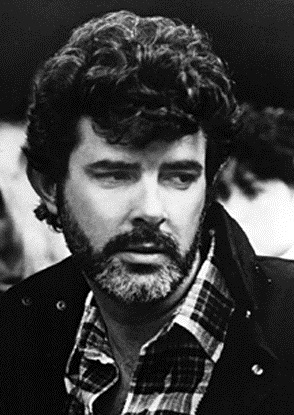OPINION: ‘American Graffiti’ is an instant classic
George Lucas’s sophomore effort captures nostalgia, last days of summer

George Lucas, who later went on to direct “Star Wars,” directed “American Graffiti,” an instant classic.
October 21, 2020
In “Night Moves,” musician Bob Seger sang, “Started hummin’ a song from 1962, Ain’t it funny how the night moves. When you just don’t seem to have as much to lose. Strange how the night moves, with autumn closin’ in.” Seger wrote it after he watched “American Graffiti” in 1973.
“American Graffiti” is legendary filmmaker George Lucas’ second movie, which was developed between “THX 1138” in 1971 and “Star Wars” in 1977. He strayed away from the fantasy and sci-fi genres to create this coming-of-age film.
The story follows a group of high school friends on their last day of summer before leaving for college. The friends start out at a drive-in diner (which would later be used for inspiration for the diner in “Star Wars II: Attack of the Clones”), discussing their plans for the next year and whether or not they will stay home or leave for college.
“American Graffiti” strikes home for me. With COVID-19 restrictions forcing me to stay home from college while all my friends got to move out, I have lived through this kind of night firsthand. Looking towards the uncertainty of the future while not wanting to acquire adult responsibilities is an issue that I have grappled with.
While there is not much in the action department, this movie creates a nostalgia for a time period that I have no connection to. The music paired with the imagery of classic America makes me wish that I could visit this era in history. The actors are almost playing themselves. Caught in the awkward stage between teenagers and young adults, they are trying to discover who they are and how they will fit into the future.

Two notable actors from this friend group are legendary producer Ron Howard, who plays Steve, the former president of the groups’ high school. Richard Dreyfuss plays Curt, who has second thoughts about moving out for college and is considering staying behind.
“American Graffiti” is set in 1962, and the inspiration of the early Americana style is prevalent everywhere: the neon signs lighting up Main Street, people driving just to drive and the dominance of the radio. Wolfman Jack can be heard crooning across the radio waves for the majority of the night.
On one of these nighttime drives, Curt sees a beautiful woman in a white Thunderbird who mouths “I love you” to him. In true teenage fashion, Curt spends all night trying to find this mystery lady to no avail. The innocence of the characters in this movie makes their recent high school graduation very believable.
They are caught between hanging on to their youth and being forced to grow up. This final night of summer represents their childhood fading away and the expectation of maturity.
Harrison Ford is cast in his first major role, Bob Falfa. Ford’s character is on the hunt for John Milner, the tough guy in the friend group with a powerful hot rod. Falfa wants to race Milner and prove his mettle to the rest of the town.
The climax of the movie is toward the end when the sun is coming up. Harrison Ford’s character finally convinces John Milner to race after searching for him all night. The two line up at the starting line and after a long night of trash talk, Ford’s character loses control of the car and it flips and lights on fire.
The following morning, as Curt and Steve leave for college, Curt finally makes up his mind and decides to stay home from college. Following this scene is the first use of the where-are-the-characters-now cliché that has been used countless times since the release of “American Graffiti.”
Regardless of age, this movie is still a classic that anyone can relate to.









